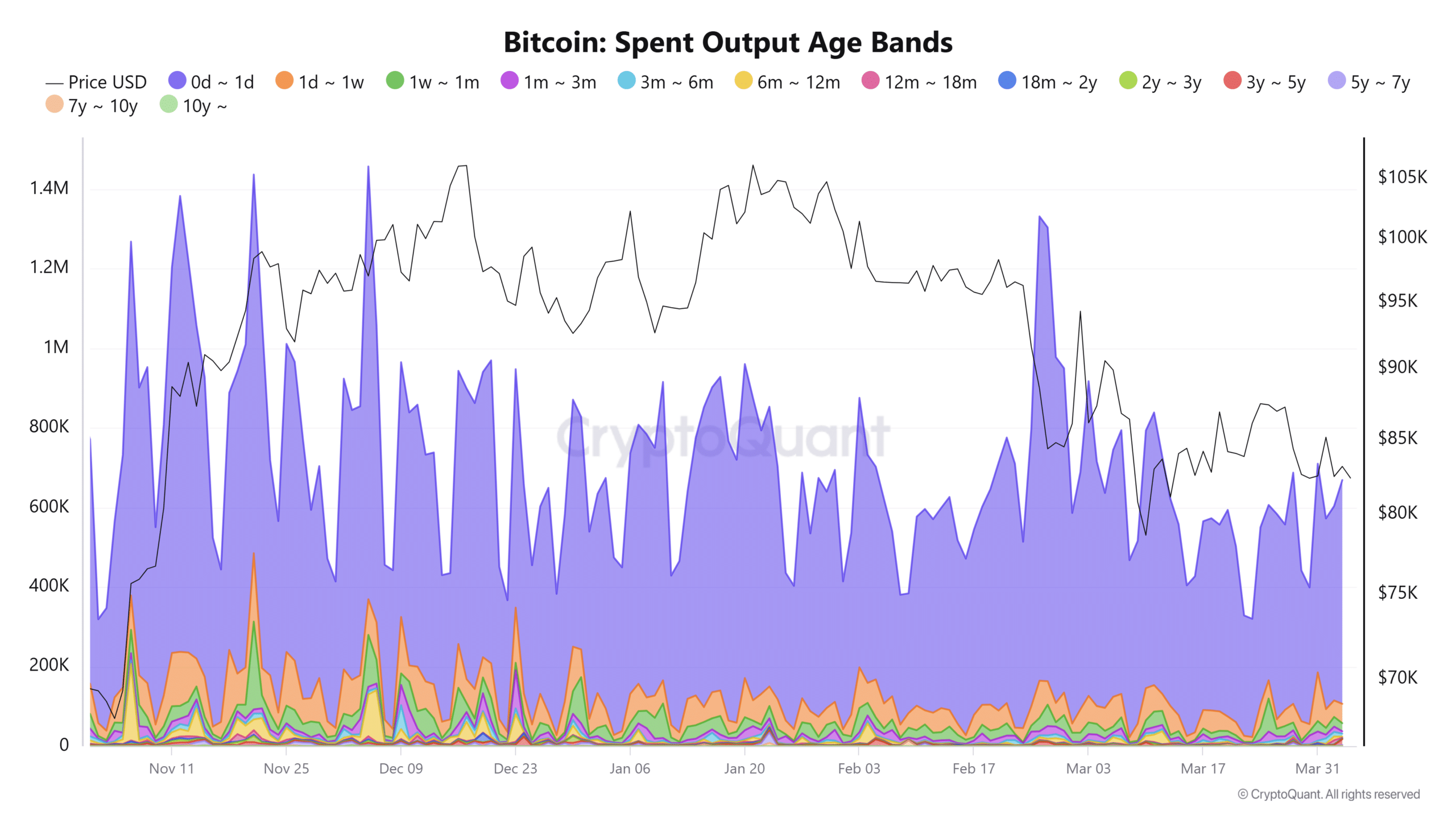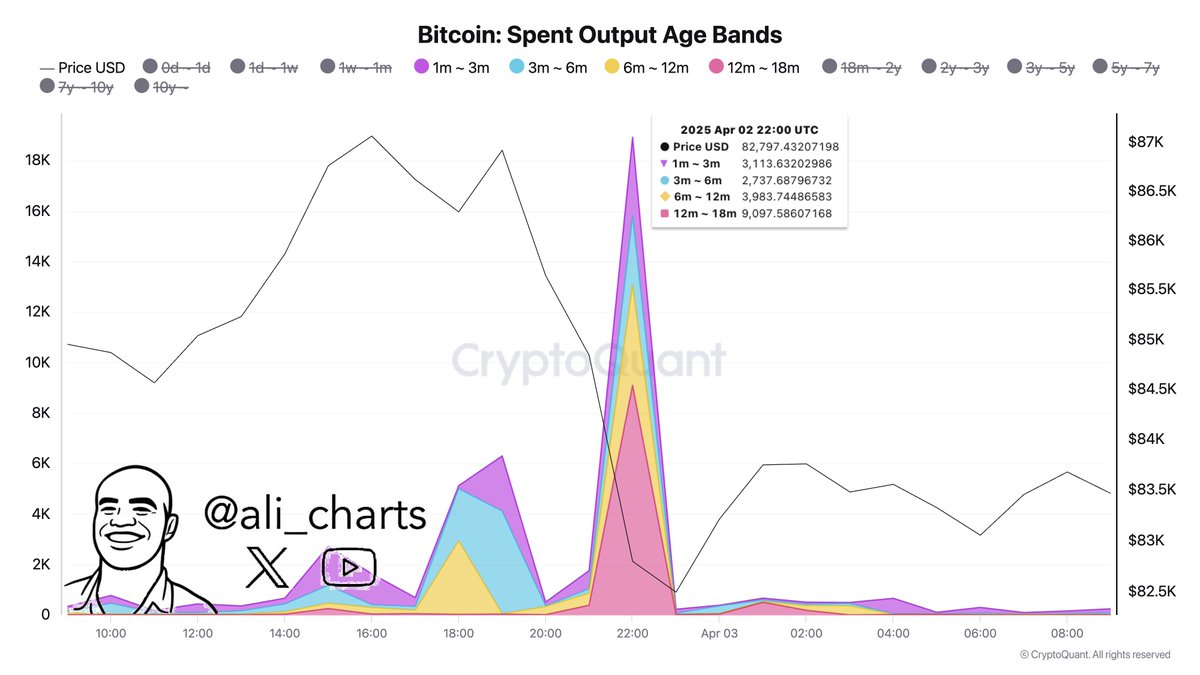-
Recent market movements have revealed significant shifts in Bitcoin trading patterns due to heightened macroeconomic tensions.
-
Following U.S. President Donald Trump’s announcement of tariff changes, Bitcoin experienced considerable volatility, with both long-term and short-term holders reacting to the news.
-
“The movement of over 1,057 BTC aged between 7 to 10 years indicates a unique response from long-term holders amidst market chaos,” according to a source from COINOTAG.
This article explores significant Bitcoin market movements in light of recent macroeconomic events and the implications for traders and investors.
What’s Behind Bitcoin’s Quick Response to Macroeconomic Events?
Following the turbulent announcement from President Trump, Bitcoin’s price oscillated sharply, dropping from $88,500 to a low of $81,000 before finding a degree of stabilization around $83,000. This rapid response underscores Bitcoin’s inherent sensitivity to macroeconomic news.
In particular, the outflow of long-dormant coins highlights a changing sentiment among holders. Notably, over 1,057 BTC that had remained inactive for several years were moved, signaling potential profit-taking or strategic shifting by long-term investors.

Source: CryptoQuant
The Calm Before the Storm? Bitcoin Price Settles Amid Chaos
Despite the rapid activity, Bitcoin’s price remained relatively stable, oscillating between $82.6K and $83.8K. This range suggests a cautious market, with long-term holders either cashing out profits or bracing for further uncertainty.
Moreover, transactions from holders aged 1 to 18 months increased significantly, with over 18,930 BTC being recorded on-chain. Such movements appear to indicate both strategic selling and reactions to external pressures.

Source: Ali Martinez
Are Big Players Preparing to Exit the Market?
An influx of Bitcoin into exchanges points to potential sell-offs by major players, particularly as evidenced by a notable single block inflow of 2,500 BTC into platforms such as Coinbase. This activity suggests that larger holders may be positioning themselves for exit strategies in light of fluctuating market conditions.
The spike in deposits from whale wallets further complicates the narrative. Transfers of between 10–100 BTC were noted, correlating closely with the dip in Bitcoin’s price, reinforcing the bearish sentiment in the market.

Source: CryptoQuant
How Trump’s Tariff Test Highlights Crypto’s Sensitivity to Macroeconomic Factors
Trump’s tariff announcement has exposed the fragility of the Bitcoin market regarding macroeconomic shocks. The response was swift—rapid outflows, movements of previously dormant coins, and a significant uptick in trading activity indicated a market acting on fear and speculative impulses.

Source: MarketBeat
Despite the immediate reaction, some analysts suggest that any prolonged geopolitical instability might actually bolster Bitcoin’s appeal as a hedge against traditional economic systems. However, the prevailing short-term indicators reflect a cautious market, primarily focused on immediate risks rather than long-term adoption trends.
Conclusion
In summary, Bitcoin’s recent volatility illustrates its close ties with macroeconomic developments. The market’s rapid reactions—from dormant coins moving to increased trade volumes—underscore a significant intersection of new retail pressure and long-term holder strategies. For investors, this period serves as a critical reminder of Bitcoin’s inherent sensitivity to external factors. Remaining informed and strategically adaptable is essential moving forward.
